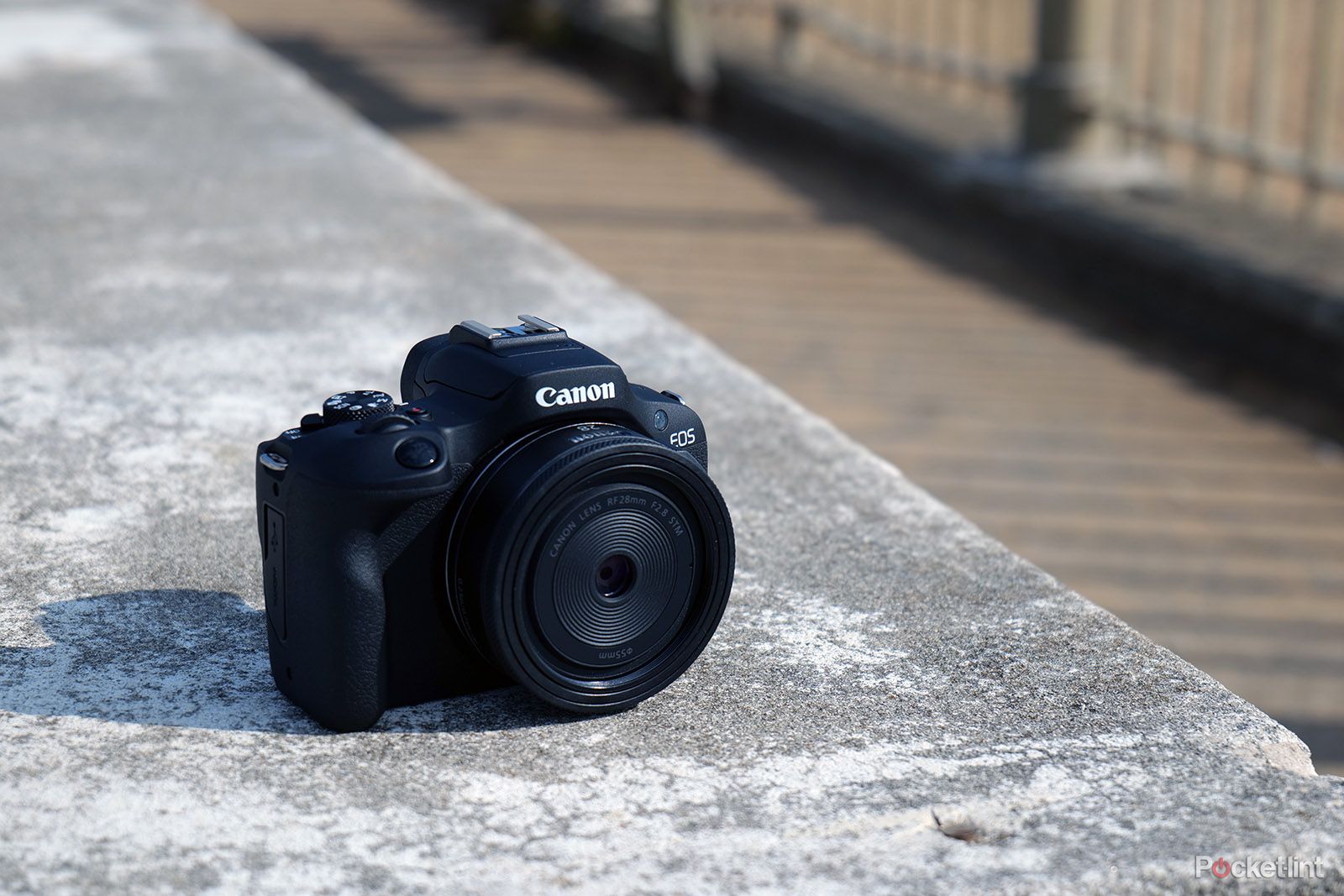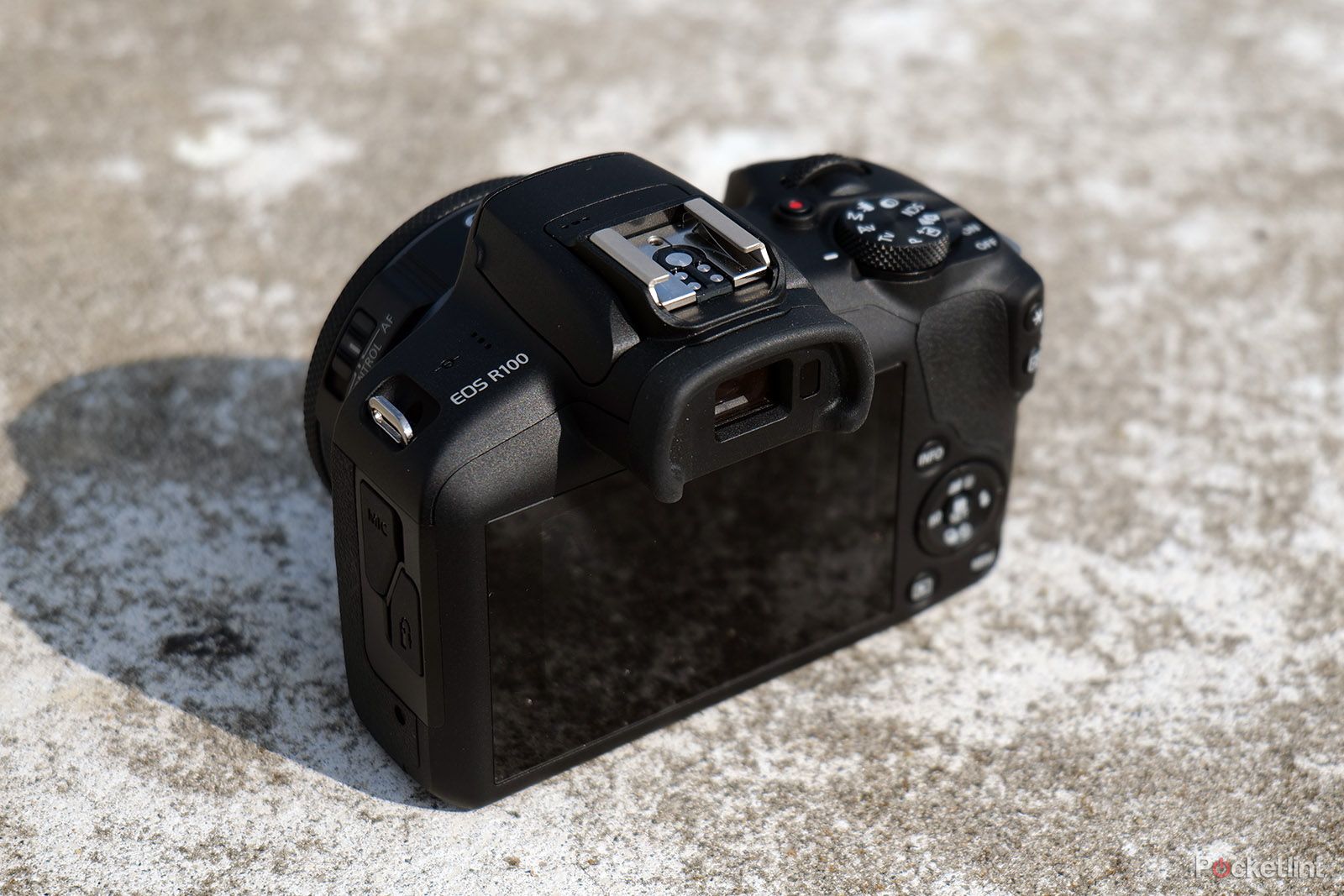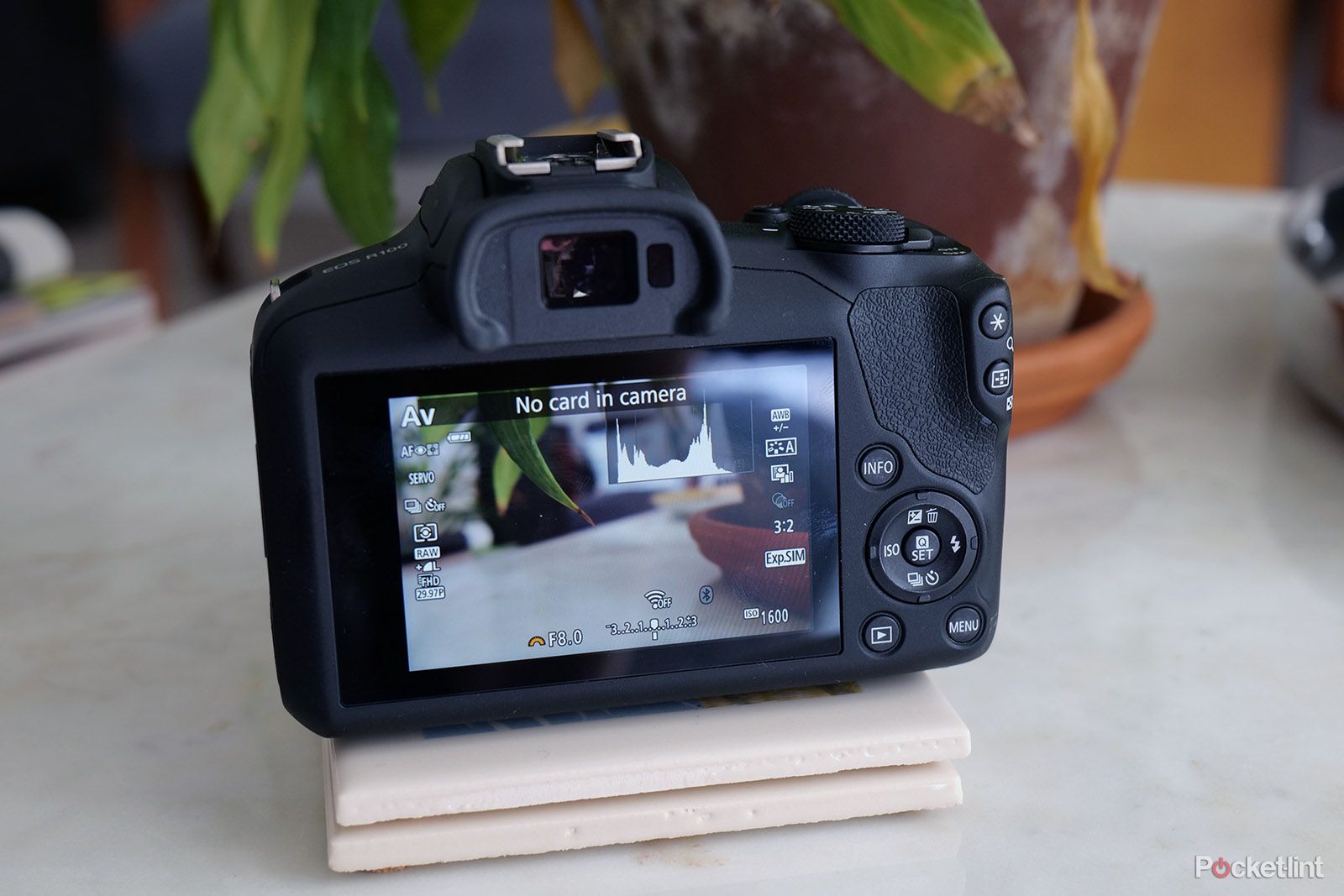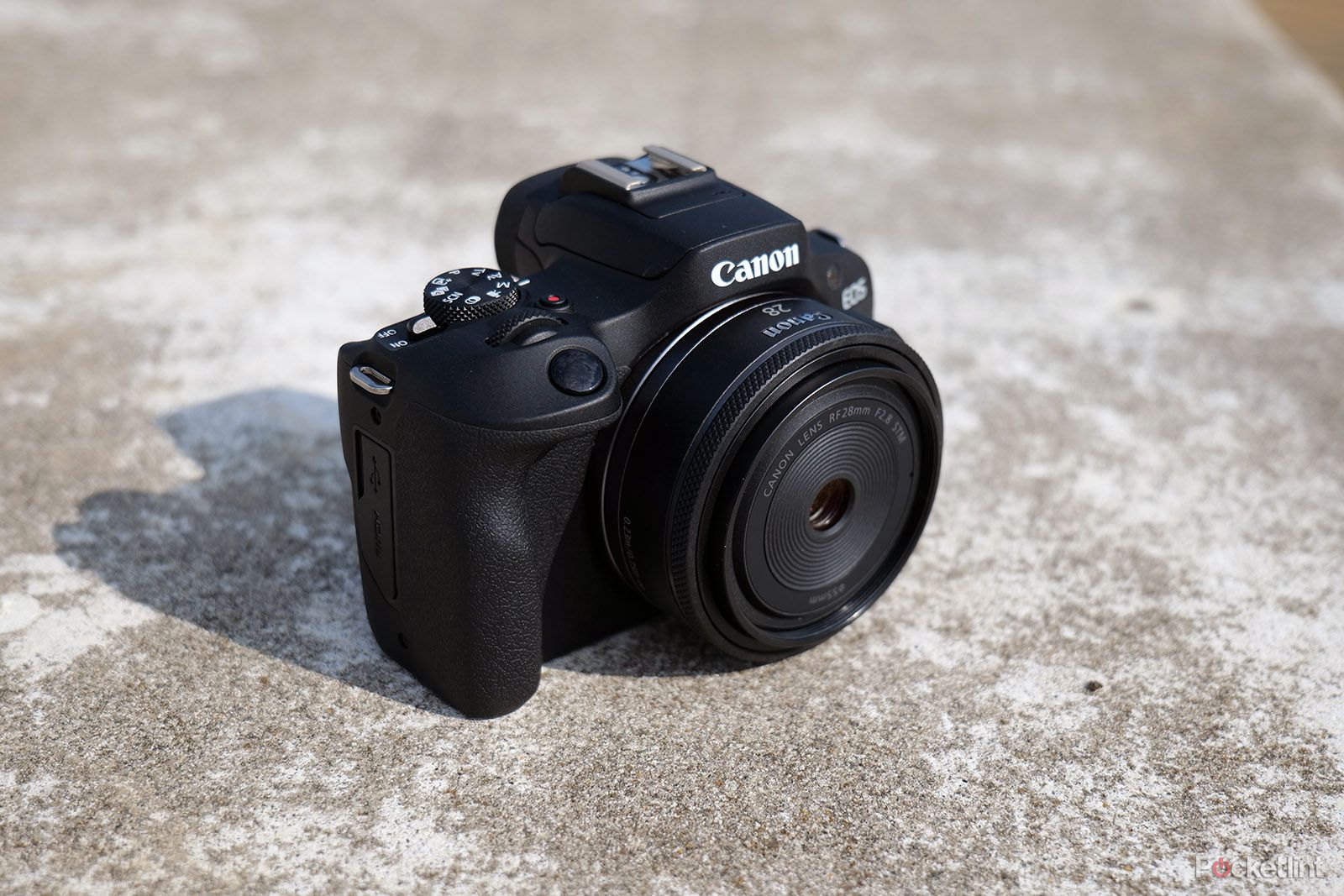Smartphones are undoubtedly the world's most-used cameras, but some would argue that they're not real cameras at all. By reducing the act of photo and video capture to mere point and shoot, they take much of the thought and process out of it. Plus, let's face it, they're pretty useless in the dark, or at successfully capturing anything moving faster than a pushbike.
The Canon EOS R100 seems designed for anyone who wants to ditch their phone, exit their point-and-snap comfort zone and embrace their inner photographer (or videographer) – and doesn't want to spend too much money doing so. Currently available for under $600/£600 (with a zoom lens included), it's one of the cheapest ways to get your hands on a new interchangeable lens camera.
But is it any good, or has Canon cut too many corners in its effort to cut the cost? After a week of snapping and filming with it, I'm ready to deliver my verdict.
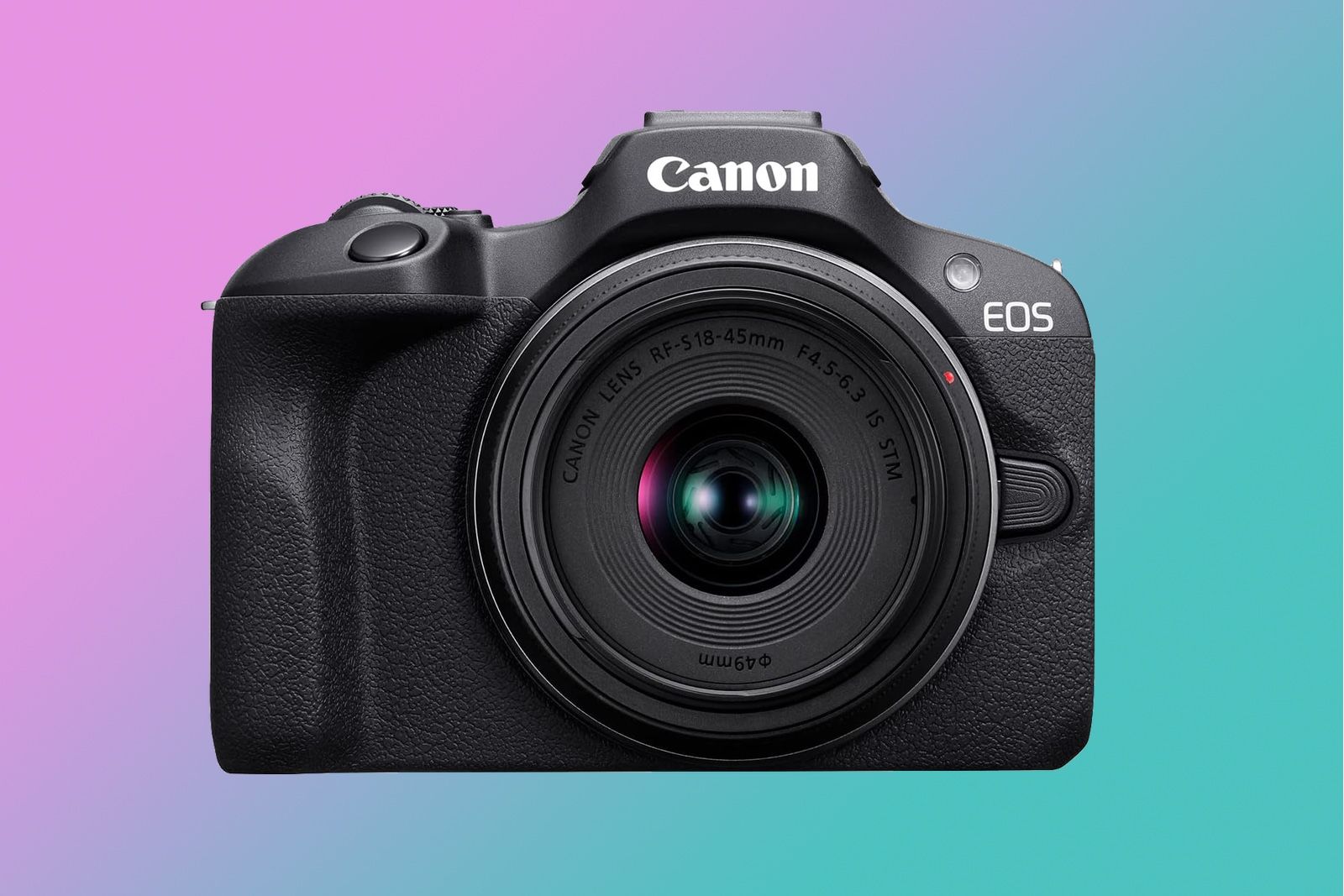
Canon EOS R100
The paucity of features will disappoint seasoned mirrorless photographers and video enthusiasts, but bells and whistles are not the point of this camera. The EOS R100 is simple but capable, particularly for photos, and feels like an ideal entry point for novices looking to master the basics of camera use.
- Lightweight and compact build
- Good human face-tracking autofocus
- Can shoot 4K video (at 24/25fps)
- No in-camera USB charging
- Fixed screen with no touch function
- Rolling shutter during video capture
Design
- Weight: 356g
- Dimensions: 116.3 x 85.5 x 68.8mm
- Mostly plastic build
The Canon EOS R100 is a cheap camera by Canon standards, and it does look and feel like one. That's not to say the design and build quality is shoddy or below par – in fact it's absolutely fine for an entry-level model. It's just very lightweight and made chiefly of plastic rather than the magnesium alloy you see on pricier EOS R models. (The included RF-S 18-45mm F4.5-6.3 IS STM zoom lens is also plastic-built, but still includes optical image stabilisation and near-silent autofocus.) And you can forget about weatherproofing or IP ratings – this thing is built for use in dry, non-dusty conditions only.
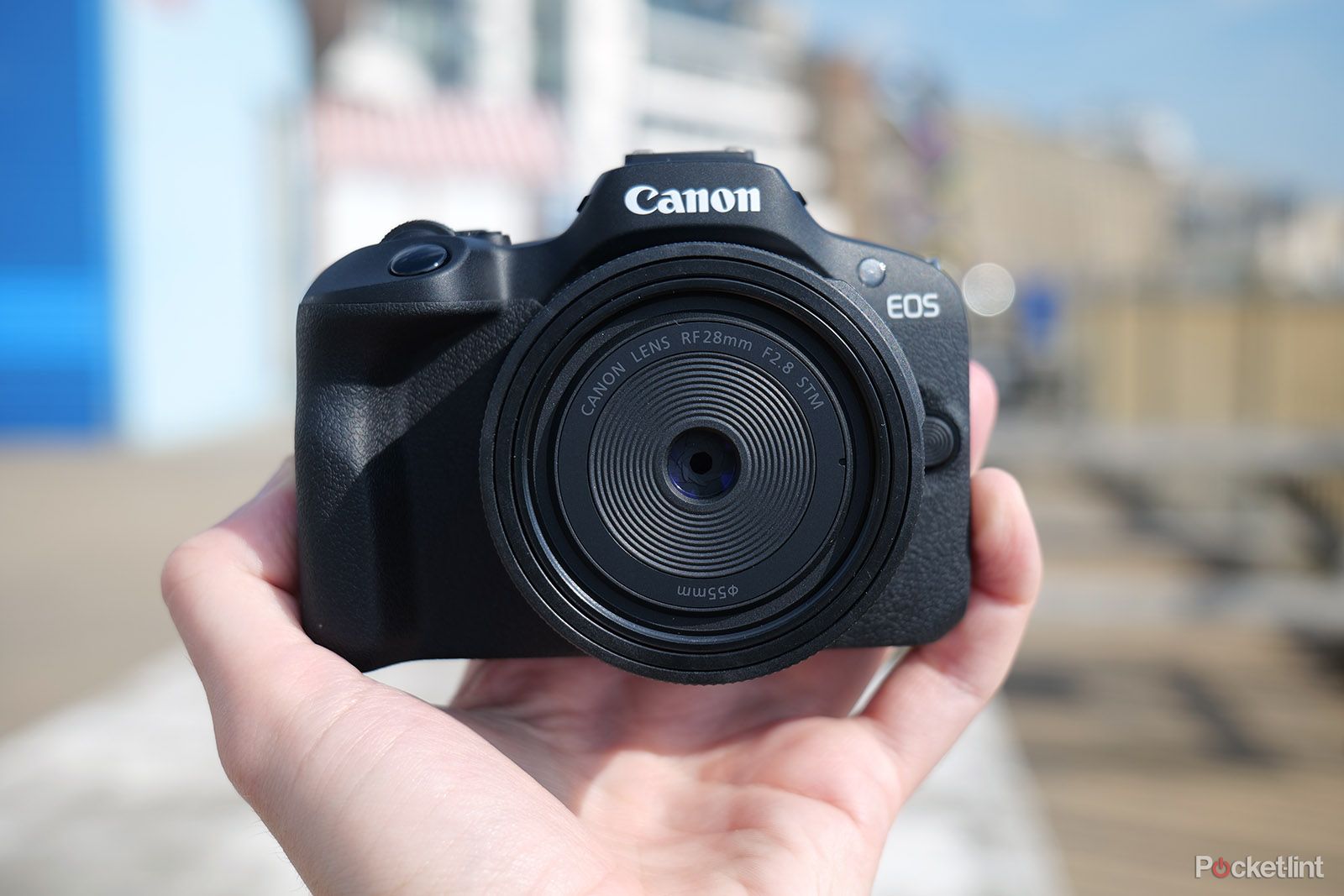
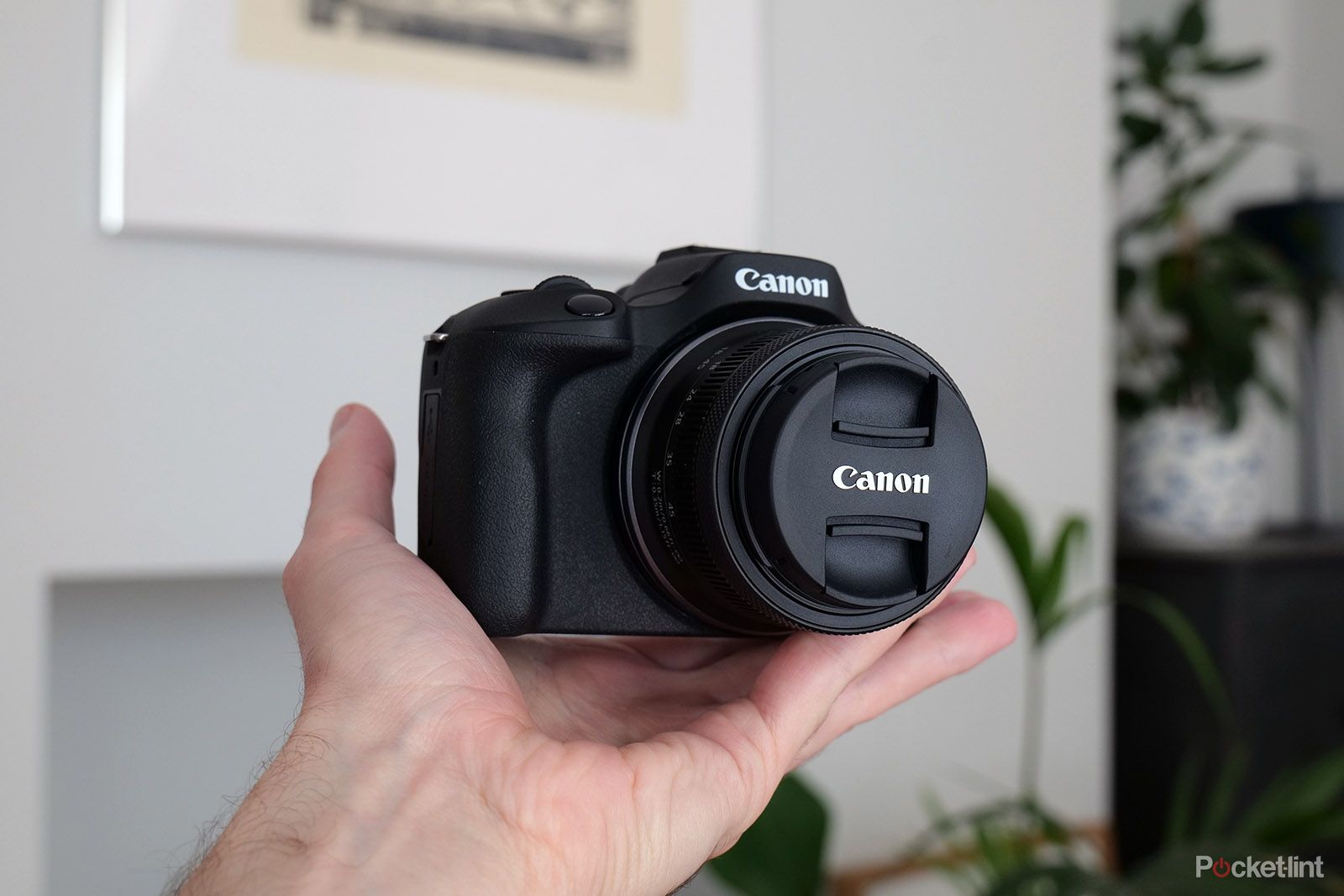
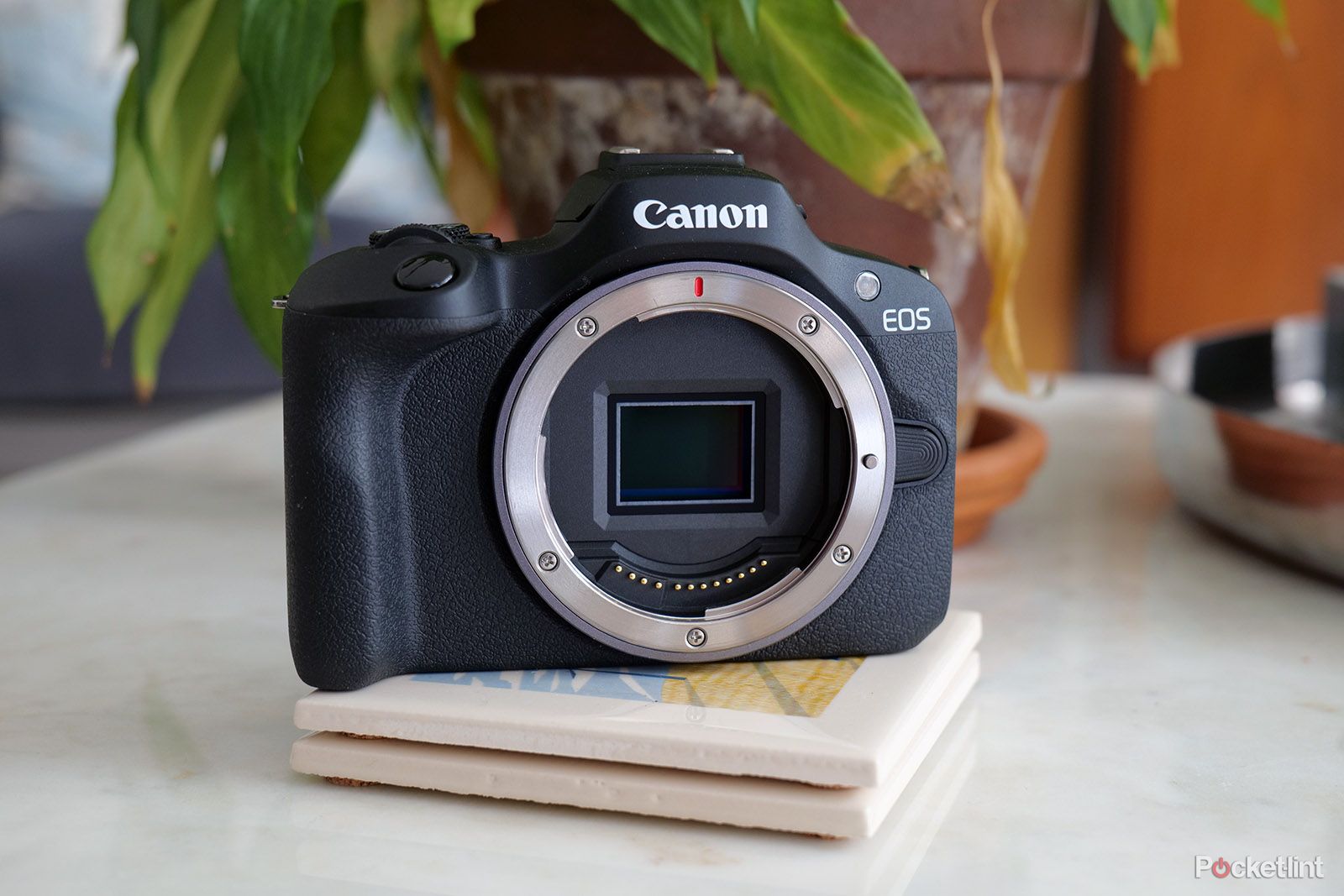
It's small too, even by mirrorless standards, and with a compact lens mounted (the kit lens retracts to a low-profile shape when not in use, so it counts as one) takes up very little space in a bag. That being said, its classic DSLR-style shape feels comfy in the hand – which isn't always the case with compact, lightweight mirrorless cameras. The only time I found the EOS R100 awkward to use was when I mounted Canon's frankly ludicrous 85mm F1.2 portrait lens on the front; this huge, hefty piece of glass and the lightweight camera body felt totally unbalanced. But look: if you're using an almost £3000 lens with a £600 camera, you're asking for trouble.
The control layout is generally logical and user-friendly, even if the tiny size of some of the buttons might pose a problem to those with girthier fingers. I'd have liked the video record stop/start button in particular to be larger and more comfortably situated; in this video-centric day and age I'd expect it to get almost as much use as the shutter button, after all. There's also only one settings dial in an era where most cameras have at least two, which could become annoying if you're a shooter who likes to exert control over every aspect of a shot.
Connectivity and displays
- 3-inch, 1.04-million dot LCD screen
- USB-C, Micro HDMI and 3.5mm mic sockets
- 2.4GHz Wi-Fi and Bluetooth 4.2
The display is the first area where the EOS R100 comes up a bit short. The screen size and display quality are up to snuff, but unlike most mirrorless screens these days it lacks even rudimentary touch functionality. What's even worse is that it's a fully fixed screen, enable to tilt, swivel or face forwards to aid in the capture of selfies or vlogs. That's verging on a camera crime in the year 2023, given we're in an era where almost everybody wants to capture content featuring their own face at some point.
As an alternative for framing your shots, there's also a 2.36-million dot OLED viewfinder. It's small at 0.39 inches in size, but certainly useful to have – especially on bright, sunny days when glare can make the LCD difficult to see.
Connectivity is pretty much what you'd expect from an entry-level mirrorless camera, which is to say it doesn't go above and beyond the basics. There's a USB-C port for data transfer, but it won't handle battery recharging – another major misstep in this footloose, digital-first age where almost every camera supports USB charging. Nobody wants to lug an actual battery charger around with them and seek out a power socket when they're low on juice. For its part, though, battery life is excellent: it's CIPA rated for over 400 shots and you'll likely get more out of it than that.
You don't get a headphone port for audio monitoring, but there is a 3.5mm mic socket and a micro HDMI output (that doesn't support external recording – it's merely for external display purposes). Storage comes courtesy of a single UHS-I SD card slot, located on the bottom of the body next to the battery.
The EOS R100 does support wireless image transfer and printing via its Wi-Fi and Bluetooth connectivity. Install Canon's Camera Connect app on your smartphone and you'll be able to use it as a wireless remote control or grab images immediately to share on social media.
Video and photo performance
- 24.1MP APS-C CMOS sensor
- ISO 100 to 12800 (25600 extended)
- 8-bit 4K/25 or 1080/60 video recording
The EOS R100 is based around a 24.1MP APS-C sensor and DIGIC image processing engine, and its imaging performance is solid. This is particularly true for still photos, which have fine detail and (typically for Canon) excellent colour reproduction straight out of the camera. The images just look really nice, basically – and you can also shoot in RAW if you want to post-process your own photos with more control. The sample images you see here were all RAW files I processed in Lightroom, and I'm very happy with the results; they're certainly better looking than smartphone snaps.






The camera isn't really cut out for proper low-light work (at least with the included kit lens – a faster lens like a 50mm F1.8 will fare better in darker conditions), and lacks in-body image stabilisation, but that's to be expected in an entry-level model. It can shoot stills at a reasonable speed of around 6fps too.
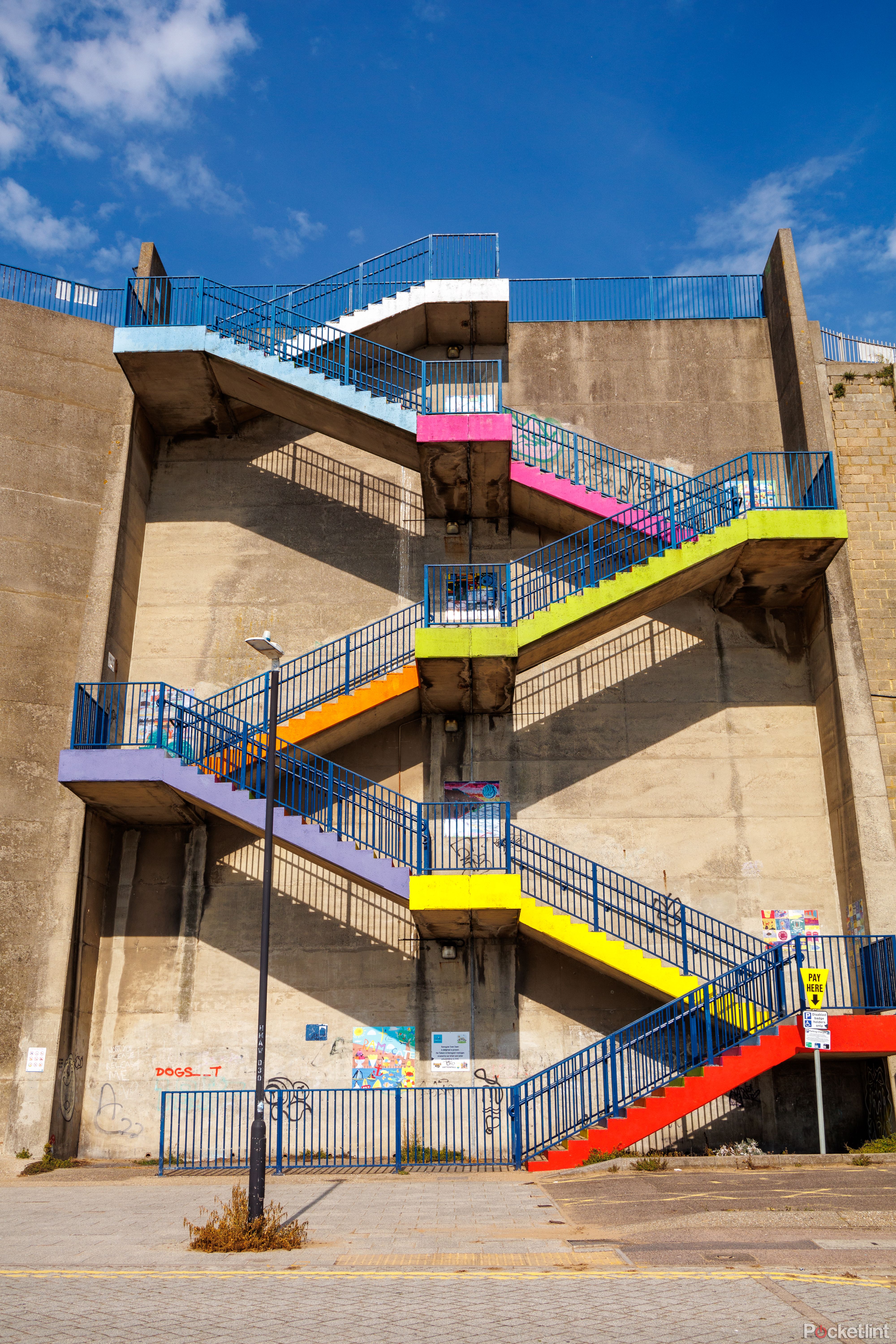

On the video side of things it can shoot 4K footage, but there are some restrictions: frame rate is limited to 24 or 25fps, there's a large crop on the footage that reduces the field of view, and the hybrid autofocus is turned off and replaced by contrast detection autofocus only.
While this isn't a particularly powerful tool for Ultra HD video capture, it fares better with 1080p, losing the crop, engaging the full suite of autofocus capabilities and supporting a frame rate of up to 60fps. When you consider the EOS R100 is essentially competing against smartphones that can record 4K at 60fps, though, having to drop down in resolution to achieve that frame rate is a bit of a disappointment.
Autofocus is pretty good on the whole, however, with the camera supporting human eye and face recognition for its tracking capabilities. It works for both still photography and video capture, and makes taking portraits, candid shots and the like a lot easier. Sadly, it lacks some of the wider recognition skills of higher-end cameras, so it won’t track pets or vehicles.
Verdict
The Canon EOS R100 doesn’t push the envelope at all, and in some ways it feels like a throwback to the mirrorless and DSLR cameras of a decade or so ago. But while, for instance, the lack of an articulated touchscreen or USB charging is disappointing, I think there's plenty here to appreciate – particularly for those entering the world of dedicated cameras for the first time. The EOS R100 might not be very exciting, and it certainly doesn’t work as a showcase for the latest cutting edge features, but it is affordable, compact and well made, and its photo quality is excellent.

